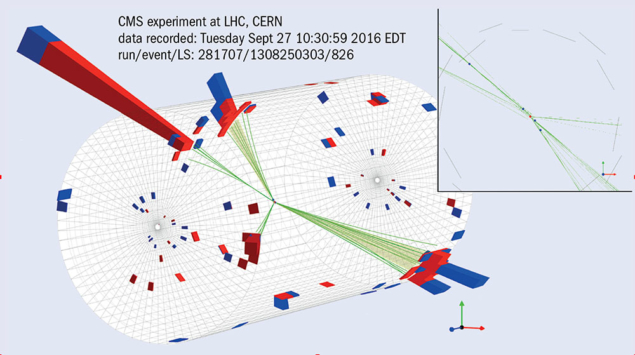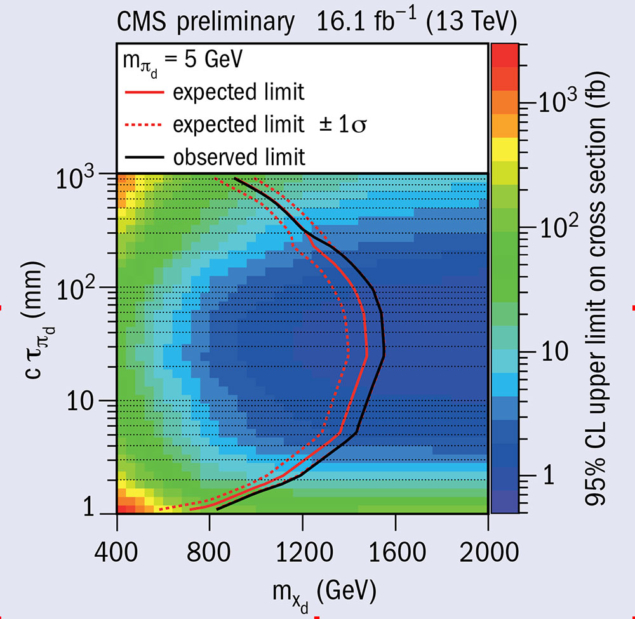
A report from the CMS experiment
Dark energy and dark matter together make up about 95% of the universe, yet we do not know the origin, constituents, or dynamics (apart from gravity) of these substances. Various extensions of the Standard Model (SM) of particle physics predict the existence of new particles as dark-matter candidates. One such model posits the existence of “dark quarks” that are charged under a new QCD-like force. Like normal SM quarks, dark quarks are only found in bound states (such as the dark proton, a stable dark-matter candidate resembling the ordinary proton) and they can only interact with SM quarks via a mediator particle. The similarity between the mechanisms of hadron production in dark and SM QCD would provide a natural explanation for the puzzling closeness of the observed energy densities of dark and baryonic matter.
In an attempt to explain the nature of dark matter, the existence of dark quarks was recently investigated by the CMS collaboration. If dark-QCD mediators were produced in pairs in the CMS detector, their signature would be striking: each mediator particle would decay into one dark quark and one SM quark, both of which hadronise and produce multiple dark and SM pions, respectively. Dark pions can travel sizable distances in the detector before decaying into detectable SM particles. Therefore, the signature would be two ordinary jets originating from the proton–proton collision, and two “emerging jets” composed of multiple neutral particles that decay at a significant distance away from their origin. Signal events could exhibit large missing transverse momentum from decays beyond the acceptance of the CMS detector.

To identify emerging jets, the CMS analysis relies on two discriminants that quantify the displacement of a jet’s constituents from the collision point. One is based on the impact parameters of the tracks associated to the jet; the other is the fraction of a jet’s energy carried by tracks compatible with the primary vertex. Figure 1 shows an event display for an emerging-jet candidate, with two jets containing multiple displaced vertices and consequently tagged by the discriminants. Substantial background is expected from the decays of B mesons and baryons, whose lifetime makes them more likely to pass the discriminating criteria. To model this background, the analysis derives flavour-dependent misidentification probabilities for jets.
This first dedicated search for the emerging jet signature explores a broad dark-QCD parameter space with mediator masses between 0.4 and 2 TeV, dark-pion masses between 1 and 10 GeV, and dark-pion proper decay lengths between 1 mm and 100 cm. The observed number of events in the CMS data is consistent with the background-only expectation, excluding mediator particles with masses of 400–1250 GeV for dark-pion proper decay lengths between 5 and 225 mm (figure 2). While new data are being collected, the quest for dark matter at the LHC is broadening its scope towards new signatures.
Further reading
Y Bai and P Schwaller 2014 Phys. Rev. D 89 063522.
P Schwaller et al. 2015 JHEP 5 59.
CMS Collaboration 2018 CMS-PAS-EXO-18-001.







